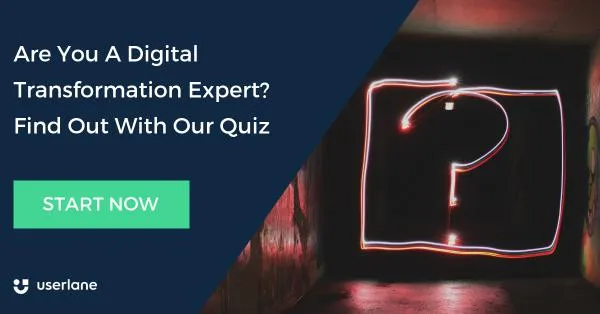Reinventing L&D to Drive Business Performance
It’s common knowledge that most industries are being disrupted by digital trends and the huge focus on technology in this ‘digital revolution’ is profound, with robotics, Artificial Intelligence (AI), and sensors becoming the new reality in every aspect of our lives, including the workplace.
The individually experienced reality of work itself is becoming incredibly complex for employees.
‘Tribes’, ‘Squads’ and ‘Guilds’ are becoming the new structures in the workplace, standing in contrast to the more traditional hierarchical structures and the average employee checking their smartphones 150 times per day.
People are now being rewarded for skills and not necessarily for their position, and collaborative thinking is at the heart of business strategy.
But is this new culture of shared values, transparent goals, and the knowledge, or, in some cases, ‘fear’ that jobs will be automated overwhelming employees? According to Glassdoor research of 2 million employees, it is; employee engagement is not improving.
In this article, I will explore the importance of Learning & Development (L&D) for business performance and how companies are using the latest technology to reinvent L&D to help ‘simplify work’ for employees and drive business performance.
I will also discuss three things you can start doing to make people the center of your strategy and to support your employees in performing their best work.

Table of Contents
Enabling Learning for Optimal Impact
A question often asked is why L&D is so critical for business performance in the age of automation, especially where some jobs will be replaced by technology? It’s a very good question, but, according to JPMorgan Chase CLO, Jesse Jackson, L&D and life-long learning have never been more important.
One thing’s for sure, the focus is moving away from learning and religiously measuring outcomes and is shifting towards designing learning programs and becoming ‘performance experts’.
In other words, L&D professionals want to help people do their best work while, at the same time, ensure that the company has people who are able to do the work required in future – a tall order!
In my experience (and something I’m hearing more and more in the marketplace), e-learning does not usually equal improved employee performance. It rarely helps people with their work and career progression in a concrete way, but we all know that the purpose of L&D is to drive individual skill growth and business performance.
But if e-learning programs are rarely appreciated by employees, yet are so important in driving performance, something about the learning programs we’re implementing today appears to be inherently wrong.
In fact, the Net Promoter Score for L&D is now -8 and lower for non-L&D professionals.
How Is Technology Transforming How We Learn?
43 percent of millennials say they are likely to leave their company because they aren’t learning fast enough. With this in mind, companies need to adopt the latest learning technology to meet their evolving expectations.
From shopping online and receiving recommendations on what to buy to AI-based chatbots, AI technology is pretty much inescapable.
Instant access to mobile and new digital technology, like AI, predictive analytics, conversational assistants, and even Gamification and Virtual Reality (VR), to name but a few, are already impacting both our private and professional lives and are set to transform the L&D function and how content is delivered to learners.
We are beginning to see more intelligent, innovative, personalized, and machine-driven learning, where people data is being used to predict business performance and apps are being designed to improve work-life balance.
There is clearly a huge focus on technology in new-age L&D.
By continually innovating and capitalizing on new learning technologies, companies are beginning to shape the future of learning with the end goal of supporting employees and improving and simplifying their learning experience so that learning can be incorporated into their working day.
Essentially, the aim is to align corporate learning with the way we take in information in our private lives.
It’s clear that embracing all this technology is a key success factor for new age L&D, but what will determine real business performance is putting your people first.
At the end of the day, it all comes down to bringing people together with traditional and non-traditional skills, from all kinds of backgrounds, in a culture that fosters growth and wellbeing.
Google’s L&D Program is a great example of a ‘people first’ culture that values learning whilst embracing the latest technology.
For example, 80% of all tracked trainings are run through an employee-to-employee network called ‘g2g” (Googler-to-Googler)’.
Google trusts its employees to grow the organization’s learning culture, as employees appreciate and recognize the value of this learning culture and what it can do for them both personally and professionally.
With Google and many other companies jumping on the bandwagon by making people the center of their transformation, the race is on! Below are three recommendations to support your employees in performing their best work.

1. Know Your People
Workplace culture is hot stuff. Spencer Rascoff, CEO of Zillow Group, interestingly calls himself “the Naked CEO”. In an interview, he says that he was “focused on corporate culture before it was cool”.
The Zillow Group was recently included in Glassdoor’s ‘Best Places to Work 2019’ report and is recognized as being a great example of a company that figured out how to leverage their unique talents to make an indelible impact in the business world.
This just goes to show that corporate culture is the ‘make or break’ for business performance.
If you want to get to know your people in the same way as Zillow Group, you need to ensure collaboration, open and ongoing feedback, and that you find out exactly what challenges your employees are facing and questions they are asking about their work and career.
Figure out how to connect with your people in the best way, and if you want people to use a learning portal, alert them to features in the context of their work and requirements.
Bottom line: if you know your people, you can alert them to real value that is tailored to individual needs and help them identify their talents and strengthen what they’re good at.
2. Focus on What’s Really Working
If you’re running an L&D Program just because you’ve always run one and because your learning modules are always well attended, it doesn’t necessarily mean it’s actually working and driving better employee performance and business results for your company.
A Facebook study shows how significant a role cultural engagement plays in effective and transparent communication, employee experience, and business performance, with 69 percent of C-suite executives believing that company culture is critical to their organization’s ability to realize its mission and vision.
A good company culture makes it possible to dig deep into what problems people are trying to solve and to analyze in detail what learning programs are being completed, face-to-face vs. online.
Without high levels of participation and useful feedback, L&D is not affecting performance and will therefore not be seen as it should be seen – as a central function and growth catalyst.
Re-align to where there is a genuine need – if you find out that you’re impacting a small amount of the company with meaningful development, leverage this best practice and focus on how to scale up.
On the other hand, if you are not impacting performance at all, re-think and go back to the drawing board.
3. Learning by Doing
We all know that learning happens best whilst doing. By giving help and guidance in the ‘Flow of Work’, you can get close to the work and identify challenges people are facing and questions they’re asking.
This way, you can influence work and provide support to help close gaps in areas where your employees are not supported enough.
To get even closer to the needs of individuals, consider leveraging AI technology to find out what people need to learn.
For example, you can ask questions in the flow of work and within learning programs and repeat questions to track progress.
If you can identify individuals’ learning styles, you can better personalize learning and bridge the learning-doing gap.

Driving Business Performance – It’s All About Your People!
Digitization is certainly driving a seismic shift in corporate L&D, one that is focused on technological tools that can bring huge benefits to your company in terms of attracting the best talent, building skills, and driving productivity.
Therefore, at the center of your strategy should be a profound focus to collaborate and support your people to do their best work.
Human learning and coaching is not disappearing, but leveraging AI for adaptive learning will complement face-to-face learning styles and help you navigate the complex digital landscape and create a differentiated experience for each and every one of your employees.
This will be key to attracting the workforce of the future and driving bottom line growth – and this, therefore, puts L&D at the heart of your business transformation and performance.
Are you interested in learning more about how technology is affecting the way we learn in the workplace? Do you want to test your current knowledge when it comes to digital transformation?
You can do so with our quiz! Find out how much you already know about digital transformation and see if you’re an expert already. Don’t be afraid to share your results!


